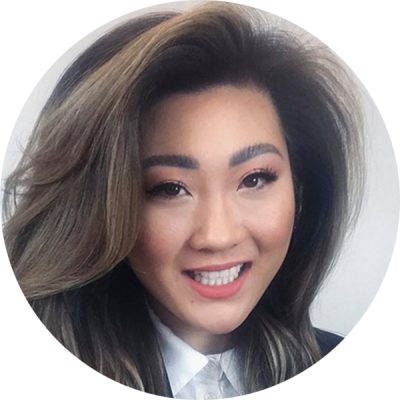
Helen Xun
Our multidisciplinary research team of surgeons and engineers use 3D printing to rapidly prototype and test medical devices, established and developed by Sung Hoon Kang with Justin Sacks and me. At the height of the COVID-19 pandemic, we investigated ventilator solutions, and rapidly prototyped ventilator multiplexors and other ventilator-associated parts. This team was led by Sung Hoon Kang, Jamie Guest, and Julie Caffrey. Our work demonstrates the potential of multidisciplinary translational engineering teams, collaborations between multiple institutions, and of adapting emerging technologies to innovate and improve patient care.
Questions & Answers
Why did you choose Johns Hopkins for your work?
I chose to attend the Johns Hopkins University School of Medicine because of its unique blend of history and vision. Departments and divisions are strong across multiple institutes, allowing for successful multidisciplinary collaborations. Furthermore, are the goals for diversity and inclusion, and promotion of women in STEM. When I first heard the stories of Mary Elizabeth Garret, Helen Taussig and Florence Sabin, I knew this was the right place for me.
What does receiving this award mean to you personally and professionally? Do you have any connection with the particular award you received?
I am humbled to receive the Paul Ehrlich Award. Seeing all the young investigators inspires me, and I feel proud to be part of such a hardworking community. For me personally, it provides me with the inspiration that I, too, can become a surgeon-scientist.
What contributed to your project’s success?
The people! There is a saying you become the most like the five people you spend the most time with. It would be my greatest privilege to become more like my PIs and my lab partners (Christopher Shallal and Runhan Tao). Despite most of our interactions being over Zoom now, the team created a supportive environment and hive mind so that no challenge is too great. We work as a team with open communication and honesty, and we motivate each other! We call each other after lab meetings because we are just so excited about the work, and we want to share the joy with each other.
What thoughts do you have about Young Investigators’ Day itself, as a celebration of the roles students and fellows play in research at Johns Hopkins?
Frequently during graduate school, students feel that their time and effort (unfortunately much of which result in failures) is not sufficiently captured by two-dimensional CVs. I have grown and learned the most from my failures, deriving a third axis of growth to become a multidimensional investigator. Young Investigators’ Day is a celebration of success and in recognition of failures that we have overcome. It is a day to honor our mentors and teams who have guided and taught us to continue “gradatim ferociter” (step-by-step, ferociously).
What has been your best/most memorable experience while at Johns Hopkins?
My best experience at Hopkins was during my first year in anatomy lab. I was enamored with the vasculature and hand. The professors were very generous and would let me stay after longer so I could continue to study the anatomy. I loved to sit there with my headphones in, listening to Bon Iver, and follow the course of an artery. I wanted to discover where it’s going (muscle?), what it’s going with (nerves or veins), and how it evolves and feels different the farther it is from home (heart).
My most memorable experience was my first time ever in the operating room, in the winter of my first year. I was shadowing Richard Redett for pediatric plastic surgery. I was very nervous, but the entire team made me feel very comfortable, and took the time to teach me. Even though it was my first time meeting everyone, the residents and staff said to me “one day, you will do this,” or “when you do this, don’t forget to …” Before that day, becoming a surgeon was unfathomable to me; that day initiated a lifelong vision. The ardor gave me confidence, and I no longer became fearful of failure.
What are your plans over the next year or so?
This year, I will graduate with my M.D. from the Johns Hopkins University School of Medicine as the first woman in my family to achieve higher education. Following graduation, I will start as an integrated plastic and reconstructive surgery resident at Beth Israel Deaconess Medical Center/Harvard Medical School, with the goal of becoming a post-trauma reconstructive microsurgeon. I plan to continue to work with multidisciplinary teams to develop expedited workflows for surgical innovations. Specifically, I hope to advance microsurgery and limb salvage in remote/resource-limited settings by using emerging technologies in fabrication and additive manufacturing.
Tell us something interesting about yourself.
I am a published nuclear chemist! I completed an internship with the U.S. Department of Homeland Security in nuclear forensics. This included visiting the National Security Site (Area 51 is so-named because it is 51 miles from the entrance), and the National Ignition Facility to learn about the largest laser-based inertial confinement fusion device (Star Trek was filmed here)! This experience taught me that truth is often stranger than fiction, and to always keep an open mind because there are so many well-kept secrets in our reality.